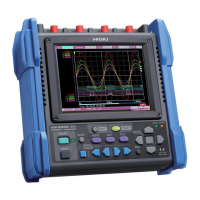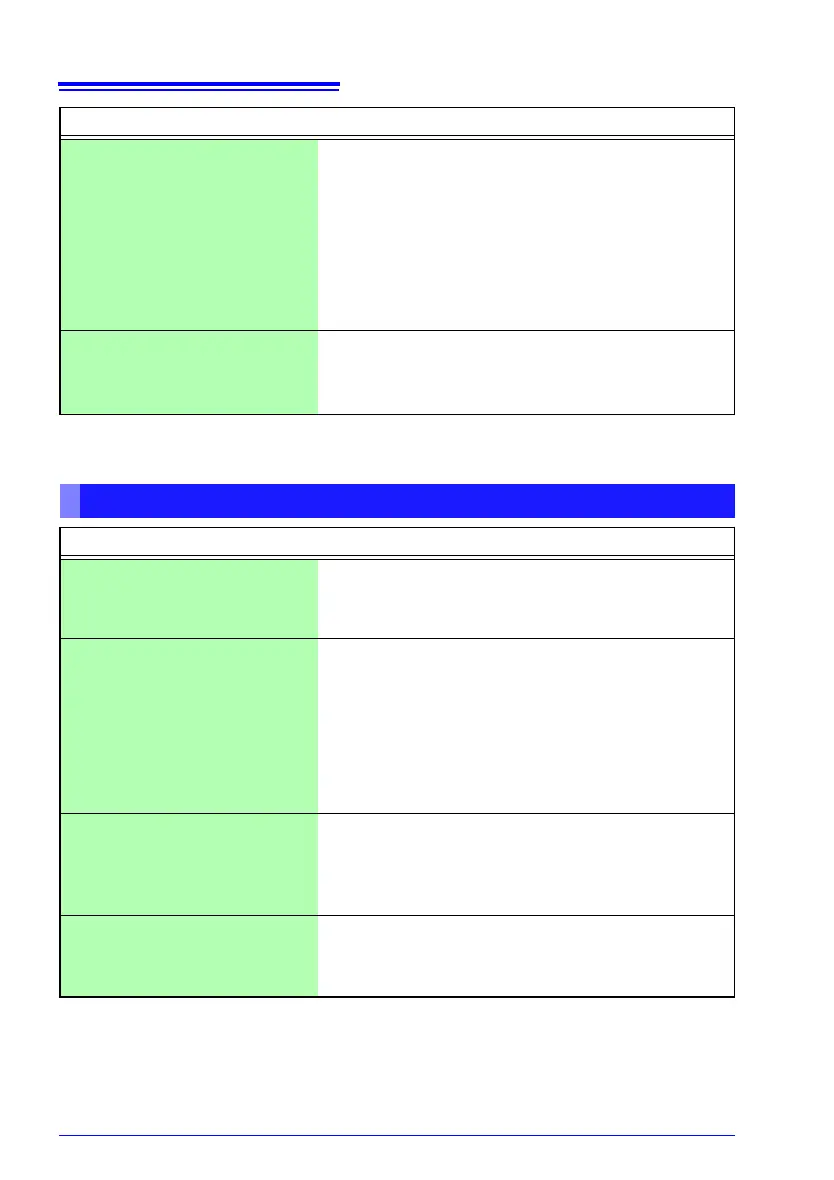Appendix 8 Frequently Asked Questions
A22
How do I acquire data only
when the external signal is in
the HIGH period?
This is only possible with the Real-
time Function.
Input an external signal to the
EXT.TRIG terminal, and configure
the settings as follows.
[Ext trig]-[Start: ↑ (Rising)], [Stop:
↓ (Falling)]
This will enable data to be acquired
only when the external signal is in
the HIGH period.
"Applying Trigger with
External Input Signal
(External Trigger)" (p.
127)
Can I use two instruments and
synchronize the measure-
ment?
The start of measurement can be
synchronized using an external trig-
ger. It is not possible to synchronize
sampling itself.
"12.6 Synchronous
Measurements with
Multiple Instruments"
(p. 226)
Measuring
Question Remedial Action Reference page
What should I do about zero
offset when the input is short-
ed?
Execute zero adjustment to com-
pensate for offset when the inputs
are shorted.
"2.8 Compensating for
Input Circuit Offset (Ze-
ro Adjustment)" (p. 49)
Even though a signal is only in-
put on CH1, why do similar
waveforms appear on unused
channels?
An open-circuit input terminal can be
affected by signals on other chan-
nels. By closing the input terminal
circuit, normal measurement is pos-
sible.
If you want to turn off the waveforms,
set the display of unused channels
to Off or short between the + and –
terminals.
"Setting Waveform Dis-
play Colors & Turning
On/Off Display" (p. 96)
How to display numerical data
values?
Press the MONITOR key to confirm
the input channels.
Cursors A and B can be used to read
the numerical values of specified
places.
"Checking Input State
(Monitor)" (p. 55)
"Displaying Cursor Val-
ues" (p. 138)
How can I apply markers while
measuring for easy searching
later?
An event mark can be inserted.
"5.2 Marking Wave-
forms and Searching
Marks (Search Func-
tion)" (p. 141)
Question Remedial Action Reference page

